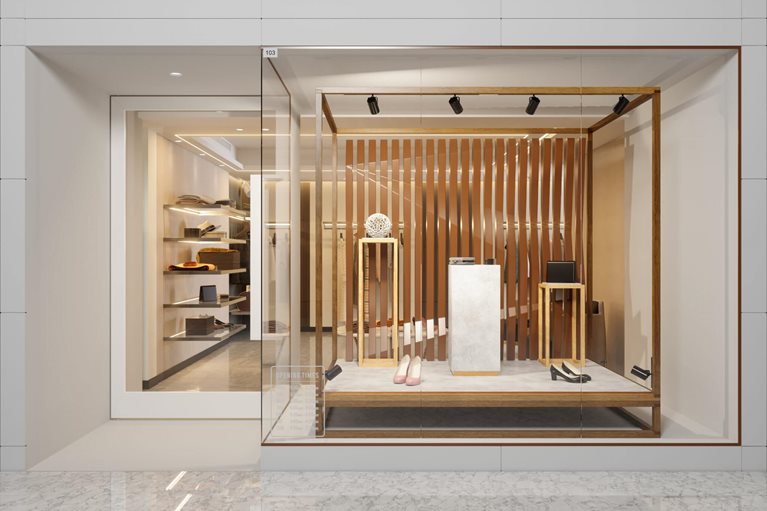
4 Ways to Improve Retail Displays Using Storage Space
Optimizing storage space to maximize your retail displays is essential for success. The more space your store has to show off your merchandise or create a memorable shopping experience, the more opportunity for sales.
For example, a boutique clothing store may only need a small yet well-designed storefront in addition to extra on-site storage, such as in the form of a shipping container.
On the other hand, a nationwide clothing retailer or successful omnichannel brand may have both on-site storage and off-site warehouses for its inventory management needs.
But regardless of the size of your store, we can provide inspiration if your business could use a little extra room to operate. Here are four ways to create more display and storage space — no expensive retail store remodeling required.
1) Take Advantage of Vertical Storage Space
Many businesses fail to utilize vertical space in their stores. If you’re struggling to maximize your store’s available retail space, sometimes the answer is as easy as looking up.
Cube storage shelves are an easy way to both display and store inventory when placed up against a wall.
For example, a clothing store may choose to display a selection of graphic T-shirts on the wall and place a block of cube storage underneath with different sizes of each item inside a different cube.

Businesses that aren’t quite ready or don’t have the budget to do entire retail store remodeling can also use cube storage to create moveable room dividers or walls that double as merchandise display shelves.
This solution is an easy and quick way to modify or add space to your retail store layout without making permanent changes to your store’s floor plan.
Other ways to utilize vertical space in your store:
- Swap-out floor lamps for track lighting.
- Use perforated panels to hang and display merchandise above eye level.
- Install slatwall panels to lengthen walls and increase merchandise display area.
- Add closet bars with invisible shelves on top for extra display or storage space.
- Hang floating shelves to create clean and stylish displays, particularly for smaller merchandise items.
2) Get Creative With Your Storage Space
Retailers who are short on space will need to rethink how they interpret the idea of storage.
There is no rule that says storage space must only be in a stockroom, out of sight from the consumer. Finding ways to hide storage in plain sight can be a game changer.

Grocery stores have been doing this for decades — consider the eye-catching pyramid displays of canned goods or thoughtfully arranged 24-pack soda towers. Customers are not only drawn to the display, but they can simply grab the item and toss it in their cart at the point-of-display.
Designing displays and retail store layouts with hidden or built-in storage can be as easy as creating a color wall of cleverly-displayed merchandise.
3) Prioritize Your Retail Inventory Management
Retail stores of any type need to find the delicate balance of having enough product on hand to supply demand — but not too much that it is unnecessarily taking up valuable space.
High product seasonality and fast-moving trends can make inventory management exceptionally difficult, especially for stores that have taken an omnichannel approach to sales, or sell both in physical stores and online.

Prioritizing your store’s inventory will help you identify exactly how much on-site space you’ll need to dedicate to inventory and operational storage space, which will in turn help inform decisions around how to best utilize and design your store.
| Is your retail store ready for the future? Read our blog post about the 9 Retail Trends and Predictions your business needs to know for 2022 and beyond. |
Many retailers have taken a cue from I.T. departments to better manage their inventory. Storage and inventory items are prioritized according to how urgently and frequently they may be needed.
Items needed on a daily basis are categorized as “hot” and kept on-site at the store or nearby. Items rarely needed, such as holiday inventory or signage, are designated as “cold” storage and usually kept in an off-site facility.
4) Think Outside the Store With Storage Units
It’s easy for retailers to focus on maximizing the available space inside their store. Retail business owners may accidentally overlook additional storage space solutions such as portable storage containers.
Portable storage containers give retailers the option of flexible storage that can be kept either onsite at their store location or, in the case of PODS, off-site in a nearby secure storage unit facility.

PODS containers can also be used as needed — delivered, picked up, and transported between retail facilties at your convenience.
Portable storage offers a unique solution to keep your retail business agile year-round and through the growing number of shopping seasons.
Curious how your retail store can create more room for inventory or storage space? Learn about PODS storage solutions for retailers.
[maxbutton id="1"]
RELATED ARTICLE: How To Excel At Retail Merchandising Each Shopping Season
Comments
Leave a Comment
Your email address will not be published. Required fields are marked *
